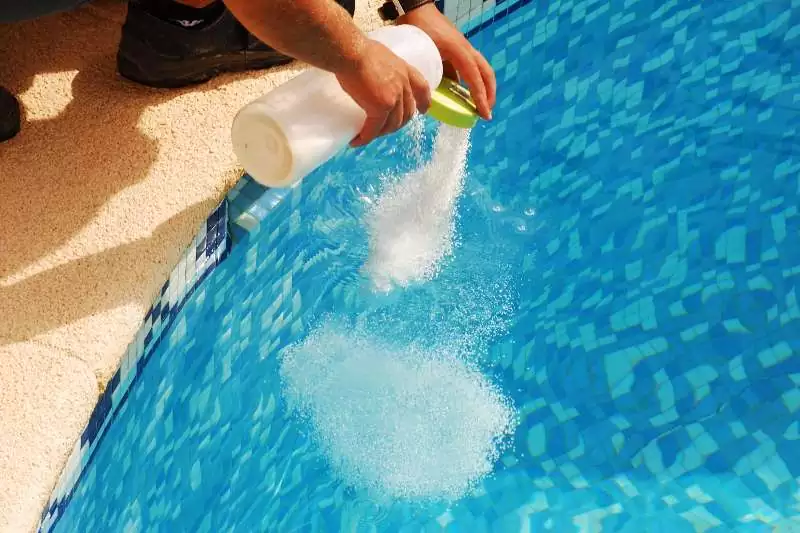
Table of Contents
Maintaining a clean and inviting swimming pool is essential for both safety and enjoyment. One of the most effective ways to achieve this is by using pool shock. Pool shock is a powerful chemical treatment designed to eliminate contaminants such as bacteria, algae, and chloramines that regular pool sanitizers may not fully address. This article will guide you on how to use pool shock effectively to ensure your water remains crystal clear and safe for swimming.
What is Pool Shock?
Pool shock is a concentrated form of chlorine or non-chlorine disinfectant used to treat pool water. It is typically added in large doses to quickly raise the chlorine level and eliminate harmful microorganisms. There are different types of pool shock, such as calcium hypochlorite, sodium dichlor, and potassium peroxymonosulfate, each with specific benefits and usage instructions.
Using pool shock correctly can prevent algae growth, kill bacteria, and break down organic debris, which is vital to keeping the pool water clean and balanced.
Why You Should Shock Your Pool
There are several reasons why you might need to shock your pool:
- Algae Growth: Algae can develop when chlorine levels drop or after heavy rain, especially if the water isn’t properly circulated.
- Heavy Pool Usage: If your pool has had a lot of swimmers, their lotions, sweat, and other bodily oils can create an environment where bacteria thrive.
- After a Storm: Debris, leaves, or contaminants from storms can lower the quality of your pool water, making shocking necessary.
- Cloudy or Smelly Water: Sometimes the pool may develop an unpleasant odor or cloudy water, indicating a need for shock treatment to eliminate chloramines and bacteria.
How to Use Pool Shock Effectively
Follow these steps to properly use pool shock and maintain a clean, clear pool:
Test Your Pool Water
Before applying pool shock, always test the pool water with a reliable pool testing kit. Check the pH and chlorine levels, as pool shock works best when the pH is between 7.2 and 7.6. If the pH is too high or too low, adjust it with a pH increaser or decreaser accordingly.
Choose the Right Pool Shock
Depending on your pool’s needs, choose the correct type of pool shock. For example, calcium hypochlorite is great for regular shocking, while potassium peroxymonosulfate is a good non-chlorine alternative, particularly for quick fixes and low-chlorine pools. Always check the instructions on the label for dosage recommendations.
Dilute the Pool Shock (if Needed)
Some pool shock products, like calcium hypochlorite, need to be diluted before use. Fill a bucket with water (never use pool shock in undiluted form directly) and add the recommended amount of shock. Stir the mixture well before adding it to your pool.
Apply the Pool Shock
Turn on the pool’s pump and circulation system to ensure the water is evenly distributed. Slowly pour the diluted shock solution around the perimeter of the pool, starting at one end and working your way around. For best results, apply the shock in the evening or at night when the sun is not directly overhead, as UV rays can reduce the effectiveness of the chlorine.
Wait for the Recommended Time
After applying the shock, allow the pool water to circulate for at least 8 hours (overnight is ideal) before swimming. This allows the shock treatment to fully work and ensures the chlorine levels return to safe levels for swimming.
Test the Water Again
After the recommended wait time, test the water again to ensure the chlorine levels have returned to a safe range (1-3 ppm). If necessary, adjust the water chemistry to balance the pool’s pH, alkalinity, and chlorine levels.
Tips for Maintaining Pool Water Clarity
- Shocking Frequency: Shocking your pool every 1-2 weeks is typically sufficient for maintaining clean water, but increase the frequency if you notice cloudy water or a strong chlorine smell.
- Regular Cleaning: In addition to shocking your pool, clean the pool filters, skimmers, and the pool floor regularly to remove debris.
- Proper Circulation: Ensure your pool pump and filter are running properly to keep water moving and prevent stagnation.
Conclusion
Using pool shock is a fast and effective way to maintain a health, clean pool. By following the proper procedures and using the right type of shock treatment, you can ensure that your pool water remains crystal clear and safe for all swimmers. Regular shocking, along with routine maintenance and water testing, will keep your pool in top condition throughout the season.
